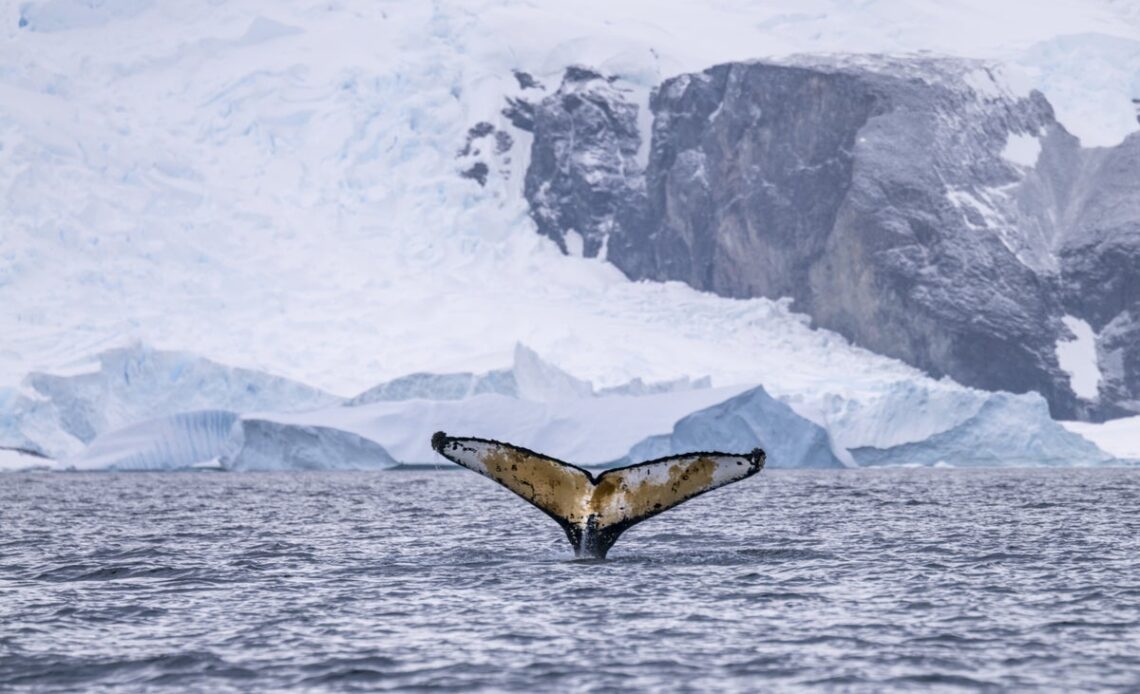There’s no quiet on earth so intense as the Antarctic on a clear morning. We’re in a sheltered bay ringed by snow-drenched peaks, the impassive faces of glaciers the size of tower blocks dropping vertically into the water. The sky above is the same blue as the cyan-tinged hearts of the icebergs bobbing silently on the gentle swell, and the only sound is the faint crackle of brash ice against our small boat. So when the peace is shattered by the sound of a 30-ton whale snoring, it’s impossible to ignore.
The humpback is “logging” – floating sleepily at the surface so it can breathe. Every so often spray flies up from its blowhole, with a sound like a giant’s sneeze. And when Ari Friedlaender raises a crossbow and shoots, I hold my breath. We watch as the bolt pierces the humpback just behind the dorsal fin, before we break into whoops and cheers.
The marine biologist is here in the Antarctic not to slaughter whales, but to study them. The crossbow shoots harmless, modified bolts which take a miniscule sample of skin and blubber, allowing a team of scientists to gather data including sex, genetic profile and hormone levels that can signify a range of factors, from pregnancy to stress response. For a whale with a 15cm layer of blubber under its skin, the biopsy bolt is no more painful than a gnat bite; the most extreme reaction we see after shadowing the scientists for four days is a startled tail slap, throwing up a rain of spray.
Scientists approach a whale in the icy waters
(Ted Grambeau for Intrepid Travel. Imagery collected under scientific permits: NMFS #23095, ACA # 021-00)
Dr Friedlaender is a renowned whale expert who has been studying the Antarctic cetacean population for 25 years. Using biopsies, drone footage and bespoke technology – including a $12,000 (£9,800) computerised tag with motion sensors, audio, video and GPS which stays attached to a whale for up to two days – his team is building the most comprehensive picture ever of the lives of the cetaceans that migrate to these frigid waters to feed during the austral summer.
The study of whales is not an easy business. When your subject spends most of its time beneath the ocean’s surface, human observation alone just doesn’t cut the mustard. Add in the inaccessibility of Antarctica, and scientific endeavour becomes doubly costly and challenging.
Read…
Click Here to Read the Full Original Article at The Independent Travel…
